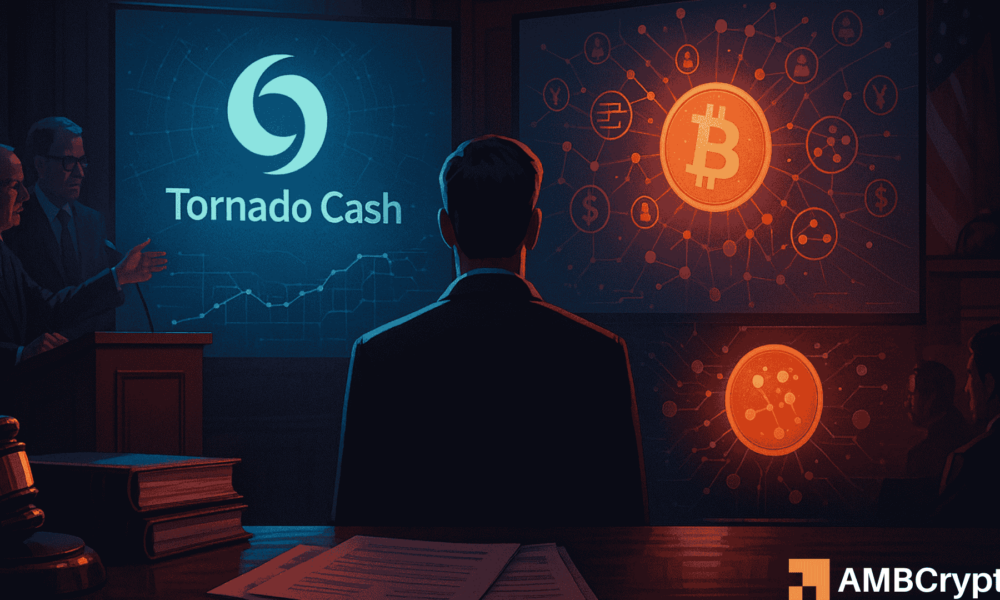The Ongoing Legal Battle of Roman Storm: Tornado Cash and the Future of Cryptocurrency Regulation
As the cryptocurrency industry continues to grow and evolve, legal challenges emerge that can reshape its landscape. One significant case currently in the limelight is the trial of Roman Storm, a developer associated with Tornado Cash, a project that has raised eyebrows in regulatory circles. Storm, convicted of running an unlicensed money transmitting business, seeks an overturn of his conviction, igniting a wider debate on cryptocurrency governance and legality.
The Case Background
Roman Storm’s conviction came after a four-week trial, during which the jury was presented with a plethora of evidence linking him to alleged money laundering operations that processed billions in cryptocurrency. The case stems from accusations that Tornado Cash was being utilized as a vehicle for illicit activities, essentially obscuring the trail of criminally acquired funds. Storm’s defense hinged on the argument that Tornado Cash merely constituted decentralized code, devoid of malicious intent, but prosecutors contested this narrative adamantly.
Government’s Response to Storm’s Defense
In a robust rebuttal, U.S. prosecutors filed a comprehensive 113-page brief dismantling Storm’s claims, labeling them as “meritless” and lacking substantive backing. They argued that the evidence presented during the trial decisively disproved his assertion of Tornado Cash as an innocent open-source initiative. Key to their argument was the testimony from Storm’s own expert witness, who acknowledged that Tornado Cash featured multiple interconnected components beyond its immutable smart contracts, indicating a more complex system than Storm represented.
Financial Motives Behind Tornado Cash
Compounding the dilemma are revelations regarding Storm’s financial maneuvers. Evidence presented suggests that he took significant steps to obscure an estimated $12 million in profits from operating Tornado Cash. This involved liquidating governance tokens through an account linked to a foreign national and employing pseudonyms to mask his financial activities. Such actions cast doubt on his portrayal of Tornado Cash as a benevolent project, suggesting that profit motivations were indeed a driving factor behind the enterprise.
Links to Notorious Cybercrime Cases
Further complicating the case are connections between Tornado Cash and significant cybercrime incidents, notably the Ronin Bridge hack, attributed to North Korean hackers, the Lazarus Group. Prosecutors highlighted transactions flowing through Tornado Cash that directly contravened U.S. sanctions, demonstrating that Storm allegedly maintained a system that facilitated these transactions despite being alerted to the issues. This aspect of the prosecution’s case reinforces claims that his activities were far from benign.
The Jury’s Mixed Verdict
While the jury found enough evidence to convict Storm on conspiring to operate an unlicensed money transmitting business, they deadlocked on other serious charges, including money laundering conspiracy and sanctions violations. This division underscores the complexity of the case and the challenges inherent in adjudicating digital currency matters in a rapidly evolving regulatory landscape. Despite the jury’s indecision, prosecutors maintain confidence in the strength of their evidence across all charges.
The Future of Cryptocurrency Regulation
Storm’s ongoing legal battle raises critical questions about the future of cryptocurrency regulation. As authorities grapple with the implications of decentralized finance, cases like Storm’s could pave the way for clearer guidelines. With numerous cases similarly positioned at the intersection of technology and legality, the outcome here will likely ripple through the cryptocurrency sector, influencing developers, users, and regulators alike.
In conclusion, Roman Storm’s case encapsulates a crucial moment in the evolution of cryptocurrency governance. The outcomes of legal proceedings such as these will significantly impact the regulatory framework surrounding decentralized applications and the responsibilities of those who create and manage them. As lawmakers and the public watch closely, the need for clarity and effective regulation has never been more apparent.


